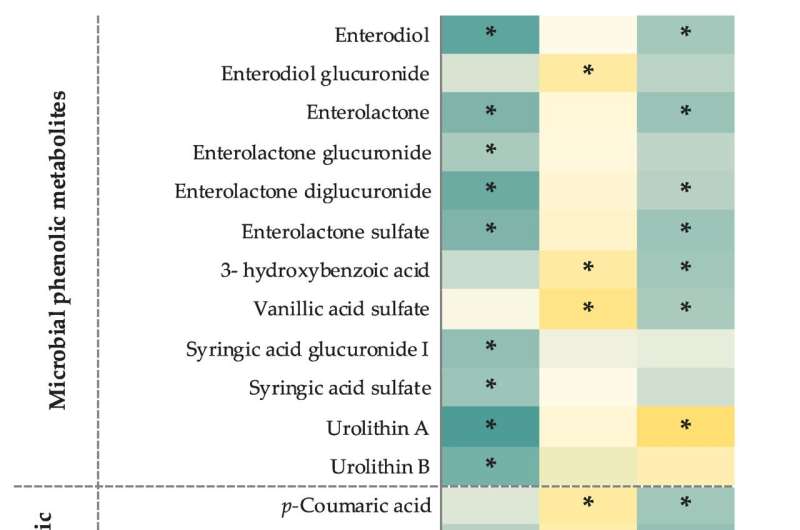
Eating peanuts and peanut butter could have a beneficial impact on vascular health in young and healthy people, according to a study published in the journal Antioxidants. The paper is led by Rosa M. Lamuela, professor at the Faculty of Pharmacy and Food Sciences of the University of Barcelona, and member of the Institute for Nutrition and Food Safety Research (INSA-UB), located in the Nutrition and Food Torribera Campus, and the Physiopathology of Obesity and Nutrition Networking Biomedical Research Centre (CIBEROBN).
Peanuts, which are obtained from the leguminous plant Arachis hypogaea, are considered nuts in terms of nutritional composition and are the most widely consumed nuts worldwide. High in fatty acids, protein, fiber and polyphenols, they represent a convenient, accessible and nutrient-rich snack that contributes to a healthy lifestyle.
Peanuts, polyphenols and vascular health
Most nutritional studies focus on analyzing significant differences in people with a high risk of suffering from a disease, especially older people. In this population profile, it is easier to observe a beneficial effect if the dietary pattern is altered or a healthy food is introduced into their regular diet.
This study included the participation of 63 healthy young people—aged between 18 and 33—who included a daily portion of peanut products in their regular diet for a period of six months. “In this study group, it is more difficult to see any effect of dietary changes on health,” says Professor Rosa M. Lamuela, from the UB Department of Nutrition, Food Science and Gastronomy.
This study is the first nutritional intervention to confirm an improvement in vascular markers related to the antithrombotic and vasodilator effects in healthy young people after eating peanuts. “The results reveal a significant increase in urinary levels of phenolic metabolites in those young people who had eaten a daily dose of peanuts and peanut butter compared to the control group, which had eaten a cream without fiber or polyphenols,” says Rosa M. Lamuela.
“Similarly, participants who ate peanuts or peanut butter also showed improved levels of prostacyclin I2 and the ratio between thromboxane A2 and prostacyclin I2, lipid molecules (eicosanoids) which are considered markers of vascular health,” the researcher notes.
“Interestingly, some phenolic metabolites that increased significantly after the consumption of peanut products —especially hydroxycinnamic acids— also correlated with the improvement in both markers,” says researcher Isabella Parilli-Moser (INSA-UB-CIBERobn), first author of the article.
The new study reinforces the hypothesis defended in the scientific literature and in previous studies by this research group on the protective effect of polyphenols—the main antioxidants and anti-inflammatory compounds in the diet—on cardiovascular diseases in adults, as well as their antithrombotic and vasodilator effects. Also, the consumption of nuts and peanuts has been linked to a lower risk of developing cardiovascular diseases and diabetes, especially due to the protective effect of the polyphenols found in these foods.
The article highlights one of the potential health benefits of including peanuts and peanut butter in our diet, “but we need more studies to fully understand the mechanisms that explain the positive effects of peanut consumption on vascular health,” the researchers conclude.
The study, published in the journal Antioxidants, was carried out as part of the ARISTOTLE project, an initiative to analyze the prebiotic and postbiotic effects of consuming peanut products, promoted by The Peanut Institute (United States).
More information:
Isabella Parilli-Moser et al, Urinary Phenolic Metabolites Associated with Peanut Consumption May Have a Beneficial Impact on Vascular Health Biomarkers, Antioxidants (2023). DOI: 10.3390/antiox12030698
Journal information:
Antioxidants
Source: Read Full Article
